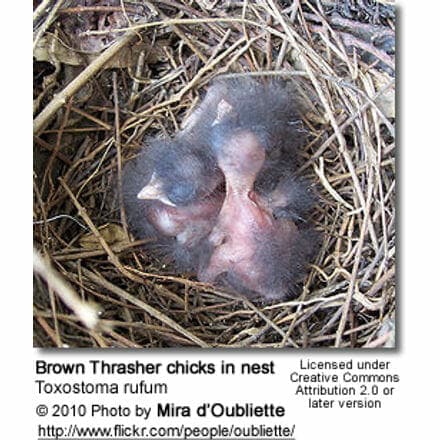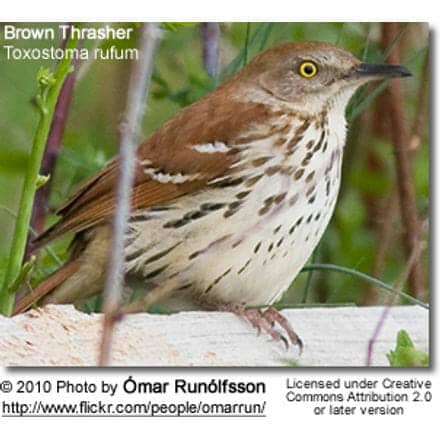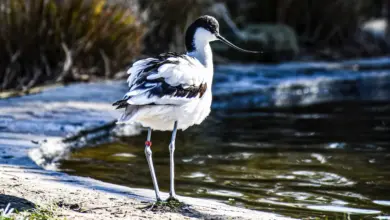Brown Thrashers
The Brown Thrashers (Toxostoma rufum) is a species of thrasher, part of a family of New World birds (Mimidae) that includes New World catbirds and mockingbirds. It is sometimes erroneously called the Brown Thrush.
The Brown Thrasher is the official state bird of Georgia, and the inspiration for the name of Atlanta’s National Hockey League team, the Atlanta Thrashers.

Description
The Brown Thrashers is, as the name suggests, mostly brown or reddish-brown above, with a white breast and throat streaked with brown, and two white bars on each wing. It has a long tail, and its beak is also relatively large and somewhat curved. Adults average about 29 cm (11.5 inches) in length.
It is difficult to see all these birds, however, as the bird is a retiring type that prefers thickets and heavy brush, often searching for food in dry leaves on the ground. It is more likely to be heard than seen, not only because of the rattling of leaves but also because of its call, a sharp lip-smacking type of sound.
Diet / Feeding
This bird is omnivorous, eating insects, berries, nuts, and seeds, as well as earthworms, snails, and sometimes lizards.

Distribution
It is found in thickets and dense brush, often searching for food in dry leaves on the ground. Its breeding range includes the United States and Canada east of the Rocky Mountains.
It is a partial migrant, with northern birds wintering in the southern USA, where it occurs throughout the year. There is a single British record of this unlikely transatlantic vagrant.
Call / Song
They can call in up to 3000 distinct songs. The male sings a series of short repeated melodious phrases from an open perch to defend his territory and is also very aggressive in defending the nest.
Nesting / Breeding
The female lays 3 to 5 eggs in a twiggy nest lined with grass. The nest is built in a dense shrub or low in a tree. Both parents incubate and feed the young. These birds raise two or three broods in a year.
Status and Threats
Although this bird is widespread and still common, it has declined in numbers in some areas due to the loss of suitable habitat.
References:
- BirdLife International (2004). 2006 IUCN Red List of Threatened Species. IUCN 2006. Retrieved on 12 May 2006. Database entry includes justification for why this species is of least concern
- “Columbia Encyclopedia (sixth edition, 2008): Mimic Thrush”. https://www.encyclopedia.com/doc/1E1-mimicthr.html.
External links:








